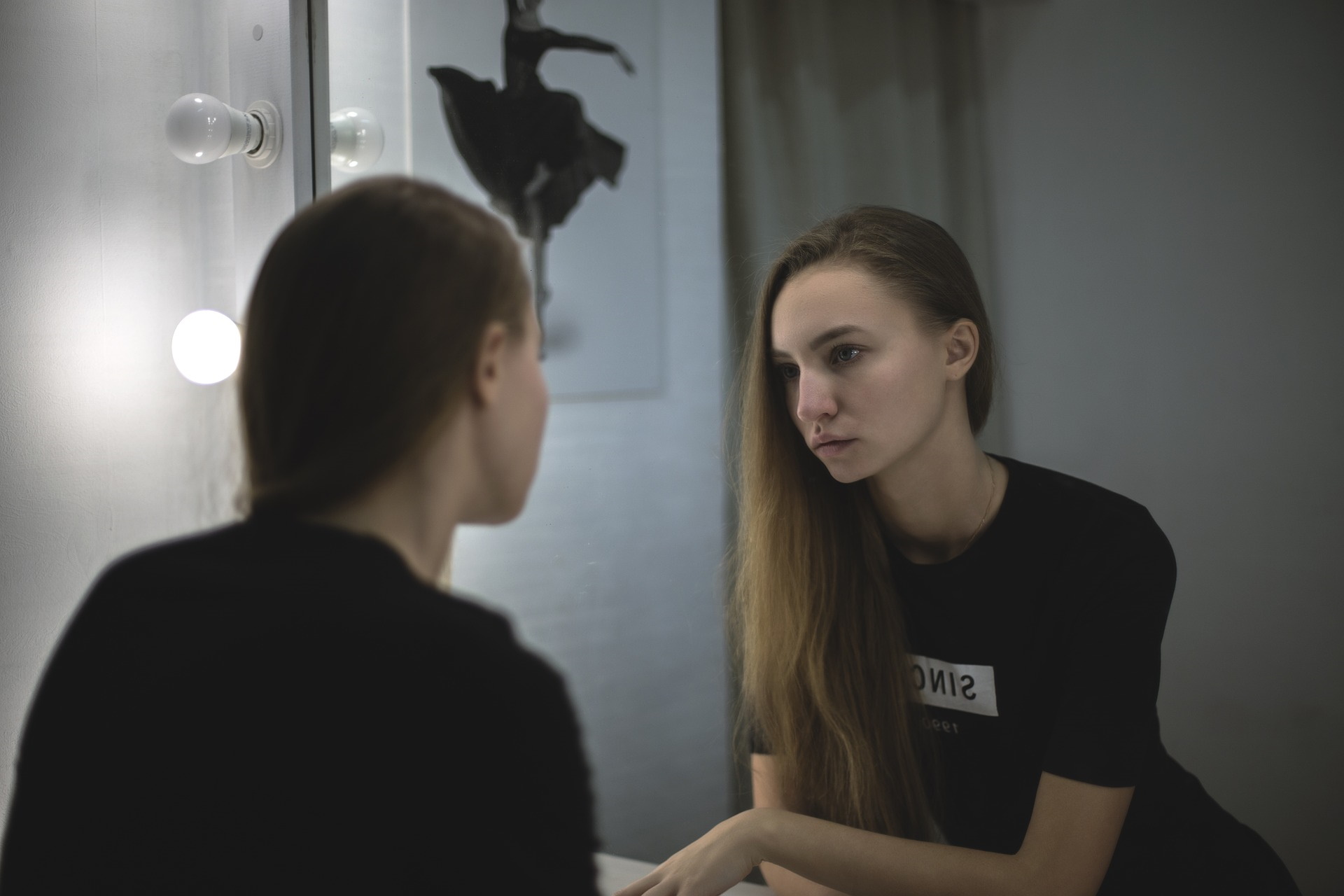5 Ways to Deal with Body Image Issues
Many a time we assume body image issues affect only the young due to peer pressure and media pressure but this isn’t necessarily so. Whatever our age, we can benefit from these quick tips by Rebecca Brown who is an avid traveller who has had the amazing opportunity to travel to dozens of countries around the world, showcasing her experiences on Rough Draft.
In a recent Mission Australia Youth survey, 33% of respondents listed body image as a personal concern. Body image is shaped by a wide variety of factors. Some of those factors, like genetics, we cannot change.
But, Instagram posts with ultra-toned bodies are some triggers we can go without. You may be tempted to delete your social media profiles, but don’t let the pesky entertainment industry beat you. Here are a few quick tips that will help you appreciate how awesome you are!
%22%20transform%3D%22matrix(7.5%200%200%207.5%203.8%203.8)%22%20fill-opacity%3D%22.5%22%3E%3Cellipse%20fill%3D%22%23dcdcdc%22%20rx%3D%221%22%20ry%3D%221%22%20transform%3D%22matrix(32.7301%2024.12686%20-65.19946%2088.4485%2013.6%2039.4)%22%2F%3E%3Cellipse%20cx%3D%2246%22%20cy%3D%22165%22%20rx%3D%2252%22%20ry%3D%2252%22%2F%3E%3Cellipse%20rx%3D%221%22%20ry%3D%221%22%20transform%3D%22rotate(-46.3%20293%20-182)%20scale(34.36516%2067.4585)%22%2F%3E%3Cellipse%20fill%3D%22%23717171%22%20rx%3D%221%22%20ry%3D%221%22%20transform%3D%22matrix(41.53723%2057.52064%20-42.51965%2030.70461%20104.8%2045.3)%22%2F%3E%3C%2Fg%3E%3C%2Fsvg%3E) 1. Switch to Positive Talk
1. Switch to Positive Talk
Don’t stand in front of the mirror just so you can think about what you don’t like about yourself. Instead, think of all the cool stuff your body can do! The human body is a true wonder. Your nose can detect over one trillion smells! And, your body is so tough it can manage with just one kidney.
Your body is your friend, not your enemy. Don’t bash it, compliment it! Your life emulates your thoughts. Start the day with gentle, affirming phrases.
%22%20transform%3D%22matrix(7.5%200%200%207.5%203.8%203.8)%22%20fill-opacity%3D%22.5%22%3E%3Cellipse%20fill%3D%22%23b3b3b3%22%20cx%3D%2249%22%20cy%3D%2211%22%20rx%3D%2267%22%20ry%3D%2267%22%2F%3E%3Cellipse%20fill%3D%22%23090909%22%20rx%3D%221%22%20ry%3D%221%22%20transform%3D%22matrix(227.67868%20-114.83649%2033.61057%2066.63745%20143%20141.7)%22%2F%3E%3Cellipse%20fill%3D%22%23515151%22%20cx%3D%2256%22%20cy%3D%2276%22%20rx%3D%2269%22%20ry%3D%2222%22%2F%3E%3Cellipse%20cx%3D%2213%22%20cy%3D%22160%22%20rx%3D%2253%22%20ry%3D%2230%22%2F%3E%3C%2Fg%3E%3C%2Fsvg%3E) 2. Stop Avoiding Your Body
2. Stop Avoiding Your Body
Worse than lamenting your figure in front of a mirror is avoiding mirrors altogether. Don’t avoid mirrors. Start approaching them. Try something new, moving in different ways and doing activities that you would normally avoid. It may seem intimidating, but activities like clothes shopping and swimming at the beach can help your build self-esteem. You are more likely to have positive thoughts about your body if you connect with it.

3. Check Out Your Assumptions
It’s possible that you have a distorted perception of your weight or entirely wrong convictions about it. When you see your stomach or thighs wobble, you may interpret it as a sign of being overweight. However, wobbliness is quite normal! You were made to wobble! It’s a normal characteristic. For example, some women may mistake normal premenstrual water retention as evidence that they’ve put on weight. Look for facts, avoid assumptions. As much as we are convinced of it, our thoughts are not facts.
Instead of Googling your assumptions and falling down a rabbit hole filled with dubious claims, it’s best to have a discussion with your GP. Your doctor can tell you what’s what without blowing things out of proportion or embellishing it. This especially goes for those who haven’t had much luck with traditional weight loss techniques and who think there is no hope. In such cases, your GP may suggest simple, non-surgical methods that can assist your weight loss efforts. The point being – don’t give in to hopelessness and ominous assumptions without investigating facts. Talking to a professional can help you see things right.
%22%20transform%3D%22matrix(7.5%200%200%207.5%203.8%203.8)%22%20fill-opacity%3D%22.5%22%3E%3Cellipse%20fill%3D%22%23fff%22%20rx%3D%221%22%20ry%3D%221%22%20transform%3D%22rotate(-88.4%20156%20-78.4)%20scale(53.90762%2089.92426)%22%2F%3E%3Cellipse%20rx%3D%221%22%20ry%3D%221%22%20transform%3D%22rotate(108.1%20-12.6%2059.6)%20scale(89.33415%2081.54043)%22%2F%3E%3Cellipse%20fill%3D%22%23e4edea%22%20rx%3D%221%22%20ry%3D%221%22%20transform%3D%22rotate(-179.1%20123.1%2038.5)%20scale(82.7649%2035.29606)%22%2F%3E%3Cellipse%20fill%3D%22%23000906%22%20cx%3D%2229%22%20cy%3D%2279%22%20rx%3D%2267%22%20ry%3D%2263%22%2F%3E%3C%2Fg%3E%3C%2Fsvg%3E) 4. Assess Your ‘Feels’
4. Assess Your ‘Feels’
You may feel “fat” when you feel bad. Certain situations can trigger such thoughts. For instance, getting a parking ticket, fighting with your partner, or having a stressful day at work can make you feel bad. Then, you may start to feel unattractive and overweight.
If this happens to you, you need to scratch below the surface. Ask yourself, what has caused you to feel like this. It’s important to try to separate the underlying feeling from your body image issues. You may feel different, but your appearance and weight haven’t changed. People often feel overweight right after a meal. If you get “hit” with such feelings, remember that your weight couldn’t have possibly changed.
%27%20fill-opacity%3D%27.5%27%3E%3Cellipse%20fill%3D%22%23eda9c2%22%20fill-opacity%3D%22.5%22%20rx%3D%221%22%20ry%3D%221%22%20transform%3D%22matrix(426.86366%20327.544%20-415.4245%20541.39175%201105.5%20210.8)%22%2F%3E%3Cellipse%20fill%3D%22%23030e18%22%20fill-opacity%3D%22.5%22%20rx%3D%221%22%20ry%3D%221%22%20transform%3D%22matrix(-292.15363%2078.04925%20-493.61597%20-1847.70115%20159.1%20714.9)%22%2F%3E%3Cellipse%20fill%3D%22%23691313%22%20fill-opacity%3D%22.5%22%20rx%3D%221%22%20ry%3D%221%22%20transform%3D%22matrix(1615.97387%20-80.11081%2014.43362%20291.1512%201210.9%201267.4)%22%2F%3E%3Cellipse%20fill%3D%22%23c6842d%22%20fill-opacity%3D%22.5%22%20rx%3D%221%22%20ry%3D%221%22%20transform%3D%22matrix(246.42293%204.87162%20-13.12335%20663.82374%201770%20388.4)%22%2F%3E%3C%2Fg%3E%3C%2Fsvg%3E) 5. Document ALL Your Wins
5. Document ALL Your Wins
Loving yourself doesn’t make you a narcissist. Seriously. It may be hard to remember what’s good about you when you are dealing with low self-esteem. Enter “the win file.” Whenever you achieve something that makes you proud (a new personal record at the gym, promotion, etc.) or you receive a compliment, write it down.
To have quick access to it, use Google Docs or Google Keep. Wherever you choose to make a note of it, keep the file close. Make sure to review the file regularly. Each time you read it, you’ll get an instant pick-me-up. Write down everything that makes you feel good, because even small things matter! They are evidence of achievement and evidence of love.
In Conclusion
Each of these steps can help in making great progress in battling self-esteem issues. It’s also important to understand that there are layers of issues underneath poor body image. Finding a therapist, you can trust, will help you unravel any underlying problems. With the right counsel, you’ll go a long way in building a better image of yourself.
Bob Brotchie is a counsellor, mindset consultant and creator of "Conscious Living by Design"™. He writes for Anglia Counselling, is featured on various other websites and introduces us to many guest writers all covering topics related to mental health and wellbeing.
Bob provides bespoke counselling services to individuals and couples in the privacy and comfort of a truly welcoming environment at his Anglia Counselling company office, located near Newmarket in Suffolk, England. Bob also provides professional online counselling, for local, national, and international clients. The therapeutic models offered are bespoke to the client’s needs, especially those in receipt of 'childhood emotional neglect' (CEN), whilst integrating a mindful approach to psychotherapy and cognitive behaviour therapy (CBT) principles. For clients experiencing trauma and/or phobia, Bob offers EMDR (Eye Movement Desensitisation and Reprocessing).

 1. Switch to Positive Talk
1. Switch to Positive Talk 2. Stop Avoiding Your Body
2. Stop Avoiding Your Body 4. Assess Your ‘Feels’
4. Assess Your ‘Feels’ 5. Document ALL Your Wins
5. Document ALL Your Wins